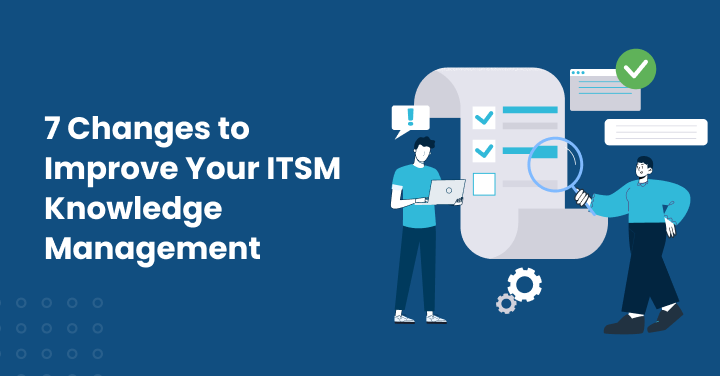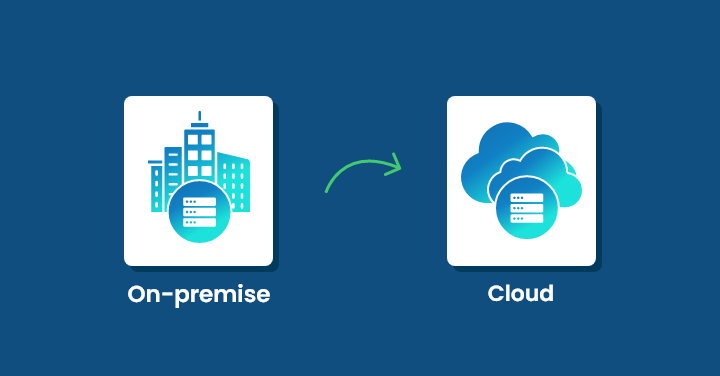Did you know that 67% of people prefer using self-service options to quickly address their issues? As business leaders ask, “What is a self-service portal?”—the answer lies in creating an efficient system that empowers both customers and employees to help themselves.
Self serve portals function as the “electronic front door” to your organization, allowing users to reset passwords, find information, and resolve issues without direct assistance. According to recent data, 61% of customers would rather use these systems to solve simple problems themselves. This self-service platform approach significantly enhances customer satisfaction while simultaneously reducing support costs.
We understand that implementing new technology requires careful consideration. Throughout this guide, we’ll explore how these portals work, their key benefits, and how they can transform your business operations by providing 24/7 support capabilities.
What is a Self-Service Portal?
A self-service portal serves as a digital gateway that enables users to find information, resolve issues, and complete tasks without requiring direct assistance from service staff. Essentially, it functions as an “electronic front door” to an organization’s services, available whenever users need support.
Self-service portals are secure digital interfaces where users can access relevant content from a single source. These platforms typically include knowledge bases, FAQs, tutorials, and tools that empower users to find solutions independently. In today’s digital environment, research has shown that these portals have become increasingly essential.
The core purpose of a self-service portal is to create an accessible platform where users can:
- Report incidents and submit service requests
- Access solutions to common problems
- Track and manage existing tickets
- Reset passwords and manage accounts
- Download software and resources
Beyond simply logging tickets, effective self-service portals deliver a positive user experience through an intuitive interface. They function as centralized hubs that connect users with the resources they need, whether they’re seeking technical documentation, knowledge base articles, installation guides, or product manuals.
These platforms come in two primary varieties. Customer self-service portals face outward, providing resources for clients through the company website. Conversely, employee self-service portals focus inward, offering internal resources plus additional features for managing payroll, benefits, and company policies.
For businesses, implementing a self-service portal goes beyond convenience – it represents a fundamental shift in support strategy. Instead of relying solely on service desk agents, organizations can empower users to become the first line of support. This approach not only speeds resolution times but also frees technical staff to focus on more complex issues requiring specialized expertise.
What are the benefits of implementing a self-service portal?
Implementing a self-service portal delivers substantial advantages for businesses seeking to enhance service delivery. A remarkable 71% of customers prefer to solve issues independently, highlighting why these systems have become essential business tools.
1. Improves the overall experience of the employees
Self-service portals transform how employees interact with internal services. With 24/7 accessibility, staff can handle HR tasks, access information, and resolve issues on their own schedule without depending on support staff. This independence creates a more positive work environment, as 75% of companies reported improved first contact resolution rates after implementing self-service.
Furthermore, these portals provide personalization that goes beyond seeing names on screens. Employees receive content relevant to their specific roles and needs, enabling them to focus on core responsibilities rather than administrative challenges.
2. Makes available services visible
Self-service portals effectively showcase available services through organized catalogs, making it easier for users to discover and access resources they might not otherwise know exist. Through this visibility, employees can readily identify which services they’re entitled to use, ultimately increasing adoption rates and service utilization.
3. Reduces the workload of service technicians
Perhaps the most significant advantage for IT teams is workload reduction. 45% of companies implementing online self-service reported measurable reductions in phone inquiries, while 39% saw a reduction in email traffic. This deflection allows technical staff to concentrate on complex issues requiring specialized expertise instead of handling routine requests like password resets.
4. Cost Saving
The financial benefits of self-service portals are substantial. Consider that:
- A conversation with a live support agent costs between $6-$12 per interaction, while automated interactions cost as little as 25 cents
- One financial company saved $5.4 million annually through self-service implementation
- Missing self-service opportunities can cost businesses up to $12 more per interaction
Additionally, these portals enable businesses to scale operations without proportionally increasing support staff, creating a sustainable model for growth with controlled costs.
Key Features of an Effective Self-Service Platform
The success of any self-service platform depends heavily on the tools and features it offers users. To build an effective self-service portal, several critical components must work together to create a seamless experience.
1. Knowledge Base
First and foremost, a robust knowledge base serves as the foundation of successful self-service. This organized repository of FAQs, troubleshooting guides, and step-by-step articles enables users to find solutions independently. Studies show that 91% of customers would use a knowledge base if it met their needs. An effective knowledge base reduces support tickets, provides consistent information across channels, and significantly improves resolution times.
2. Ticketing/Request Management
A streamlined ticketing system allows users to submit, track, and manage their inquiries without calling support. This feature lets customers create requests, check statuses, and receive notifications when something changes—creating a transparent support experience. Moreover, proper ticketing systems automatically route issues to appropriate teams, enhancing resolution efficiency.
3. Account Management
Quality self-service portals include account management capabilities where users can update personal information, track orders, and manage billing history. This self-sufficiency not only empowers customers but likewise reduces routine administrative tasks for your team.
4. Service Catalog
Service catalogs showcase all available services in an intuitive interface. This centralized menu presents offerings in categories that make sense to users, helping them quickly find and request what they need. Furthermore, service catalogs boost visibility of available resources that customers might otherwise never discover.
5. Automation and Workflows
Effective portals incorporate automation to handle repetitive tasks like password resets, order tracking, and account updates. This capability streamlines operations while simultaneously improving efficiency. By automating common processes, businesses save time and resources.
6. Personalization
Personalized experiences address users by name, display purchase history, and offer relevant content based on previous interactions. These tailored experiences make customers feel recognized and valued, thereby increasing satisfaction and engagement.
7. Reporting and Analytics
Lastly, robust analytics tools track user behavior, engagement metrics, and resolution rates. This data-driven approach helps businesses identify improvement opportunities and optimize their portals accordingly. By monitoring metrics like common searches and popular articles, companies can continually enhance the self-service experience.
Types of Self-Service Portal
Self-service portals come in different varieties, each designed to meet specific organizational needs and serve distinct user groups. Understanding the three primary types helps business leaders select the right solution for their particular requirements.
1. Customer Self-Service Portals
Customer-facing portals primarily focus on empowering external users to find solutions without contacting support staff. These portals typically include product documentation, troubleshooting guides, and community forums where customers can interact with each other. Furthermore, they often feature account management tools enabling users to view purchase history, manage subscriptions, and update personal information independently. For e-commerce businesses, these portals may incorporate order tracking and return processing capabilities to enhance the post-purchase experience.
2. Employee Self-Service Portals
Internal employee portals serve as centralized hubs for workforce needs, streamlining HR processes and IT support. These platforms often feature payroll access, benefits management, training resources, and company policy documentation. Beyond HR functions, they typically include IT service request systems, allowing staff to report technical issues and track resolution status. Notably, these portals frequently incorporate knowledge bases specific to internal processes, helping new employees onboard efficiently while reducing repetitive questions to department heads.
3. Partner Self-Service Portals
Partner portals cater specifically to third-party collaborators such as resellers, suppliers, and distributors. These specialized platforms provide access to product information, pricing details, marketing materials, and sales resources that partners need to effectively represent your brand. In contrast to other portal types, partner systems often include deal registration, lead management tools, and commission tracking features. Importantly, they serve as secure channels for sharing confidential business information while maintaining appropriate access controls between competing partners using the same system.
Above all, each portal type requires careful customization to match specific organizational workflows, branding requirements, and user expectations for optimal results.
What are the challenges of having a self-service portal?
Despite their many advantages, self-service portals present several challenges that businesses must address to ensure successful implementation. Understanding these potential hurdles helps organizations prepare appropriate strategies to overcome them.
1. User Adoption Resistance
Perhaps the most significant challenge involves convincing users to embrace self-service options. Many people still prefer traditional human interaction when seeking assistance. This resistance occurs primarily because of unfamiliarity with new technologies or concerns about the complexity of self-service systems. Consequently, businesses must develop comprehensive training programs and ensure interfaces are intuitive enough for all user skill levels.
2. Content Management Complexities
Maintaining up-to-date, accurate information represents another substantial hurdle. Self-service portals require consistent content updates as products, services, and policies evolve. Without proper maintenance, knowledge bases quickly become outdated, leading to misinformation and frustration. Organizations must establish clear content governance protocols and regular review cycles.
3. Technical Integration Issues
Connecting self-service platforms with existing systems often creates technical challenges. These portals typically need to integrate with CRM systems, knowledge bases, ticketing platforms, and other business applications. Certainly, these integration points can become failure points without proper planning and testing.
4. Balancing Automation and Human Touch
Finding the right balance between automation and human support proves difficult for many organizations. While self-service portals aim to reduce manual intervention, completely removing the human element can negatively impact user satisfaction. Businesses must determine which processes can be fully automated and which require some level of personal interaction.
5. Security and Privacy Concerns
Self-service platforms often handle sensitive user data, making them potential targets for security breaches. Additionally, organizations must comply with various data protection regulations while providing convenient access. Implementing robust authentication methods, encryption, and regular security audits helps mitigate these risks.
6. Resource Requirements
Admittedly, implementing and maintaining an effective self-service portal demands significant resources. Beyond initial development costs, these platforms require ongoing technical support, content creation, and user training. Organizations must factor these long-term commitments into their planning process.
Conclusion
Ultimately, self-service portals represent a strategic investment that delivers substantial returns for forward-thinking organizations. These digital gateways transform how businesses interact with customers, employees, and partners while simultaneously reducing support costs. The evidence speaks for itself – with and potential savings of up to $12 per interaction, these platforms offer clear financial advantages.
Success depends on selecting the right portal type and implementing essential features like robust knowledge bases, efficient ticketing systems, and intuitive service catalogs. Additionally, personalization capabilities and analytics tools help continuously refine the user experience based on actual behavior patterns.
Though challenges exist – from user adoption resistance to content management complexities – these obstacles can be overcome through thoughtful planning and implementation. Organizations must commit to regular content updates, seamless system integration, and finding the right balance between automation and human support.
The data clearly shows that self-service portals have evolved from convenient add-ons to business necessities. Companies that empower users to help themselves not only reduce operational costs but also meet growing expectations for instant, on-demand service. Therefore, business leaders should consider self-service portals not as optional technology but as essential components of their customer experience and operational efficiency strategies.
Above all, remember that effective self-service isn’t about abandoning personal support – it’s about creating more efficient pathways to resolution that benefit everyone involved. When properly implemented, these digital front doors open new possibilities for growth while freeing your team to focus on what truly matters.
FAQs:
A self-service portal is a centralized online platform where users can independently access information, solve problems, and complete tasks without contacting support staff. These web-based interfaces typically include knowledge bases, ticket submission systems, and account management tools. Indeed, research indicates that finding answers themselves through these portals rather than speaking with support agents.
Traditional help desks primarily focus on incident management through direct human interaction, whereas self-service portals emphasize user empowerment. With traditional systems, users must wait for assistance, often experiencing delays. Meanwhile, self-service portals provide immediate access to resources 24/7. Furthermore, traditional help desks handle all issues regardless of complexity, whereas portals typically resolve simpler matters while routing complex problems to specialists. As technology has evolved, many issues previously handled by help desks now get resolved through self-service options before users even notice a problem.
Beyond the benefits covered earlier, self-service portals offer unique advantages including round-the-clock availability regardless of time zones and significant cost reduction, as each support ticket handled by an agent adds operational expenses. Additionally, these portals serve as valuable data collection points, providing insights into customer preferences and behaviors that help businesses improve their offerings.






